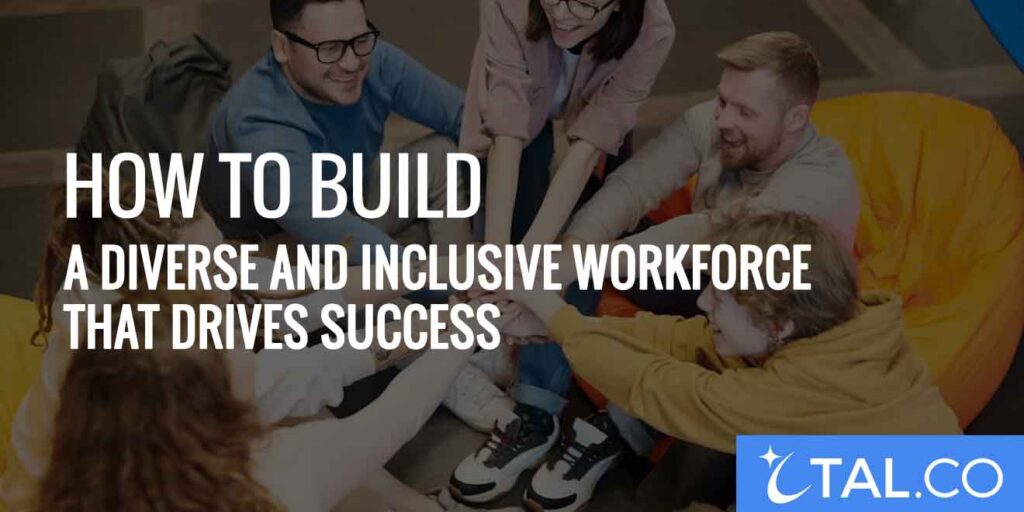
How To Build a Diverse and Inclusive Workforce That Drives Success
If you’ve been in the staffing and recruiting world for a while, you already know there’s a lot more to building a successful team than just ticking boxes on a hiring checklist. People want to feel that they actually belong—like their unique experiences, backgrounds, and perspectives are not just welcomed but truly valued. That’s where diversity and inclusion come in.
When done right, a commitment to diversity and inclusion (D&I) isn’t just corporate jargon—it’s a key driver of productivity, innovation, and overall success. Below are five practical strategies to help you bring real, lasting inclusivity to your workplace:
Outline
Define Your Goals and Secure Leadership Buy-In
Your company can’t move forward if the people at the top aren’t on board. Make sure leaders thoroughly understand both the moral and business cases for promoting a diverse and inclusive workforce. Beyond boosting the company reputation, research shows diverse teams often outperform more homogenous ones.
Once your leadership is aligned around clear, measurable D&I objectives (like improving representation in specific roles or fostering inclusive team cultures), you’ll have a firm foundation for the rest of your efforts.
Expand Your Candidate Sourcing
It might be tempting to stick with tried-and-true methods of recruiting: tapping familiar networks, posting on the same job boards, or relying on referrals from people who already think or look like you. But broadening your recruiting channels is essential if you want to attract candidates with diverse backgrounds and skill sets.
Think about reaching out to professional organizations dedicated to underrepresented groups, partnering with colleges and universities (including Historically Black Colleges and Universities, or HBCUs), or running inclusive job postings that emphasize your company’s commitment to belonging and growth for all employees.
Use Inclusive Hiring Practices and Minimize Bias
Even if you cast a wider net, you might be unintentionally screening out top talent. For instance, certain keywords in a job description can speak more to one demographic than another. Consider reviewing your job listings for language that may hint at hidden biases—like describing an “aggressive go-getter” vs. talking about collaborative, results-driven skill sets.
Also, look into structured interviews where all candidates are asked the same set of questions. This approach can help focus on each individual’s qualifications and capabilities rather than subconscious stereotypes.

Foster a Culture of Belonging (Not Just Checking Boxes)
Hiring people from different backgrounds only goes so far if they don’t feel valued once they’re in the organization. Creating a culture of belonging means thinking about day-to-day interactions, not just special events during heritage or awareness months. Encourage open dialogue and feedback.
Offer mentorship or sponsorship programs so employees who have been historically underrepresented have clear pathways to growth. The goal? A place where people are comfortable speaking up in meetings, sharing ideas, and challenging norms without fearing negative repercussions.
Provide Ongoing Training and Measure the Results
There’s no quick fix for building an inclusive environment. Offer training sessions on topics like unconscious bias, cross-cultural communication, and allyship. These don’t need to happen once and disappear—regular refreshers help keep people mindful of their words and actions.
And don’t forget to measure progress: track how your hiring, promotion, and retention rates evolve among various groups. Monitoring these metrics over time will show whether your strategies are working or need a tweak.
The Payoff
When you’re intentional about creating a diverse and inclusive workforce, your organization benefits from fresh perspectives and a broader range of skill sets. You’re more likely to attract—and keep—talented people who want to work for a company that respects and celebrates them. In a competitive staffing and recruiting market, that’s a significant edge. Plus, let’s be honest: working in an environment where everyone feels they can be their genuine selves is simply more rewarding.
So, as you focus on hiring for open positions and building your teams, keep these tips in mind. Diversity and inclusion aren’t just buzzwords—they’re key elements of a thriving, forward-thinking company. By putting in the effort today, you’ll be setting your workforce up for innovation, resilience, and ongoing success.

